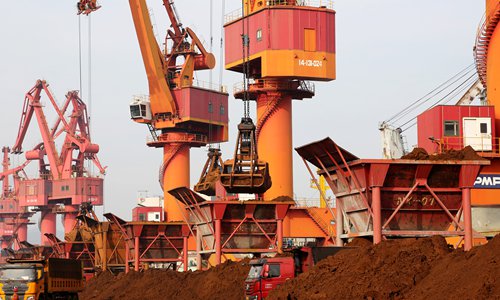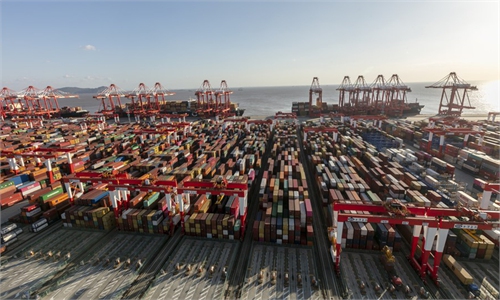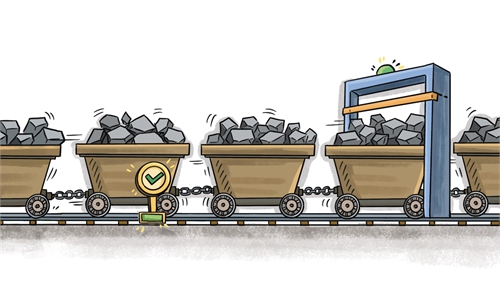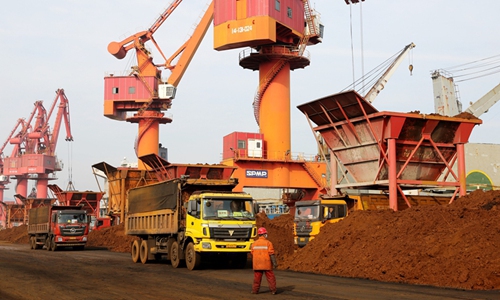
Cranes unload imported iron ore at the Lianyungang Port in East China's Jiangsu Province on Sunday. In September, the port's iron ore throughput exceeded 6.5 million tons, a new high for the year, making it a major port for iron ore imports in China. Photo: VCG
China's top economic planner and market regulator investigated the trading volume and prices of iron ore on Monday in Beijing, in an effort to stabilize the prices of bulk commodities in the country.
The price of the futures of iron ore closed 6.24 percent lower on Monday following the news. The main contract settlement price of iron ore has risen 29.50 percent from the last quarter.
Iron ore prices have risen sharply and continued to hover at a high level this year, adding pressure on the production and operation of middle and downstream enterprises, according to a statement published on WeChat account of the National Development and Reform Commission (NDRC).
"China supports the healthy development of the iron ore spot trading platform, encourage the market main body, in accordance with the law of compliance. At the same time, the country will keep a close watch on the spot market price changes, timely screening abnormal transactions and malicious speculations," said NDRC, together with and the State Administration for Market Regulation (SAMR).
In order to maintain market order, behaviors such as signing monopoly agreements, spreading price increase information, bidding up prices and hoarding will be severely punished in accordance with the law.
Last Thursday, Meng Wei, spokesman for the NDRC, pointed out during a press conference that the next step is to closely monitor the market and price changes, increase revenue through multiple channels and reduce expenditure to maintain a dynamic balance between supply and demand, and strengthen supervision of the spot and futures market to maintain normal market order.



